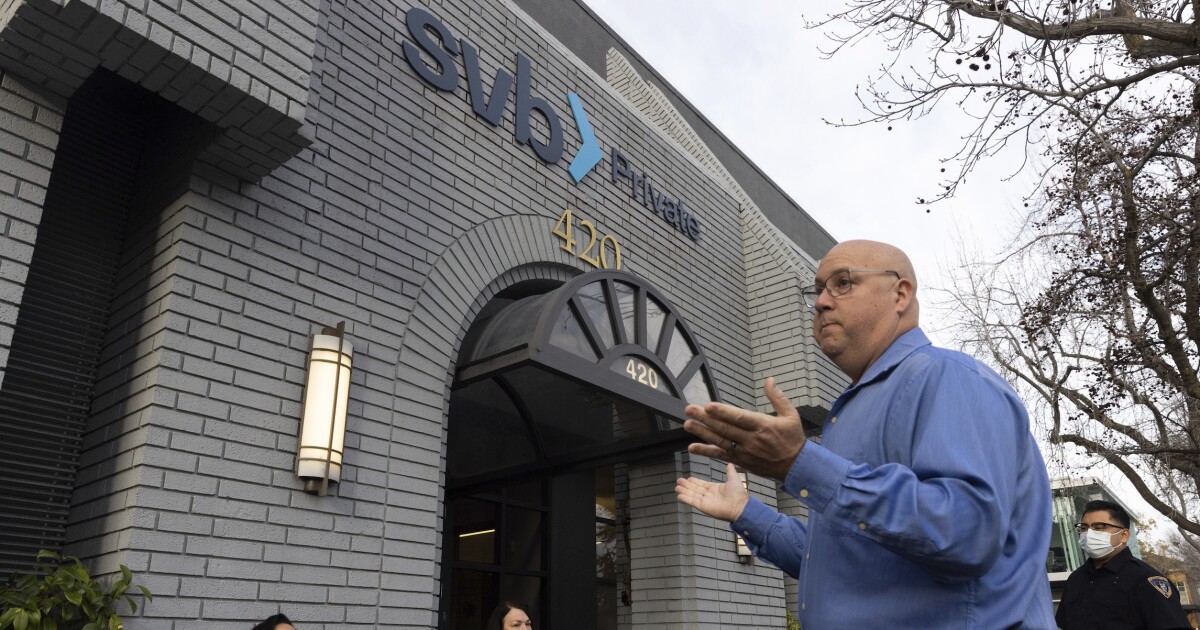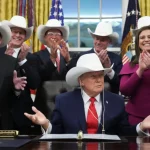

Previously unknown to the majority of the nation, Silicon Valley Bank has become a household name after experiencing the greatest bank collapse since the 2008 financial crisis.
At the close of 2022, the bank had roughly $209 billion in total assets and approximately $175.4 billion in total deposits. High interest rates, a questionable work culture, and a lack of risk management all came together to help cause the bank’s collapse, sending the financial world into a period of panic and uncertainty.
SVB COLLAPSE: SORTING FACT FROM FICTION IN SILICON VALLEY BANK BLAME GAME
Here is a timeline of the fiasco and its aftermath:
The beginning
While problems had been accumulating with SVB for months, the first overtly public sign of trouble came on March 8. The bank suddenly announced that it needed to raise $2.2 billion. CEO Greg Becker assured investors the bank was in the “financial position to weather sustained market pressures” and there was no need to panic.
“We are experienced at navigating market cycles and are well positioned to serve our clients through market volatility, with a high-quality, liquid balance sheet and strong capital ratios,” Becker said in a note to investors. He concluded by saying, “We believe we have the right strategy, a strong foundation, and a proven, recession-tested management team to successfully navigate this market cycle.”
The collapse
Investors weren’t buying Becker’s assurances, and panic ensued. A conference call from Becker the following day did nothing to ease concerns. Within days, the financial giant’s stock had fallen by more than 60%.
On March 10, the Federal Deposit Insurance Corporation announced it had closed the bank, moving its remaining assets to the newly created Deposit Insurance National Bank of Santa Clara.
Treasury Secretary Janet Yellen summoned a meeting with leaders of the Federal Reserve, the FDIC, and the Office of the Comptroller of the Currency to discuss the crisis.
Almost immediately, the FDIC was assuring depositors that they would still be able to access their funds.
“The FDIC will pay uninsured depositors an advance dividend within the next week,” it said. “Uninsured depositors will receive a receivership certificate for the remaining amount of their uninsured funds. As the FDIC sells the assets of Silicon Valley Bank, future dividend payments may be made to uninsured depositors.”
The fallout
Amid the collapse of SVB, questions were raised as to which banks were misjudging the cost and lifespan of their deposits. The yield and duration of their assets were also called into question. These fears manifested in the tanking of several leading bank stocks as depositors scrambled to retrieve their money. First Republic Bank, PacWest Bancorp, Signature Bank, and Silvergate Capital Corp all faced significant hits in their stock from the fallout.
The blow to Signature Bank turned out to be fatal, and regulators closed the bank on March 12.
Tensions rose over the weekend while analysts attempted to predict what would happen when the stock market opened back up on Monday, March 13.
Yellen ruled out a federal bailout on March 12, and the Fed, Treasury Department, and FDIC announced in a joint statement that emergency measures would be utilized to cover the deposits of those uninsured by the FDIC. Parallel measures were taken to ensure the same with Signature Bank.
Managing the fallout
March 13 opened with an address from President Joe Biden. He assured the nation that the banking system was safe.
“All customers who had deposits at these banks can rest assured, rest assured they’ll be protected and they’ll have access to their money as of today. That includes small businesses across the country that bank there and need to make payroll, pay their bills, and stay open for business,” he declared.
Nevertheless, investors’ panic materialized when the stock market opened; the Dow Jones Industrial Average was down more than 300 points on opening, the tech-heavy Nasdaq fell by over 1.2%, and the S&P 500 fell by 1.35%.
Monday also saw an intensified blame game. Many leading Republicans blamed “woke” policies for leading to the bank’s collapse, and many leading Democrats blamed bipartisan banking reforms instituted during the Trump administration that rolled back the Dodd-Frank Act.
Meanwhile, the international fallout was dampened in the United Kingdom because the government issued a special waiver to allow HSBC to acquire SVB’s U.K. branch for just over $1. This helped to an extent with investor panic, but the SVB fallout renewed troubles for Credit Suisse, Switzerland’s second-largest bank, which opened at an all-time low in morning trading on March 14. In the ensuing days, the financial giant’s fortunes would continue to deteriorate, resulting in it having to borrow over $50 billion from the Swiss National Bank the following day.
Yellen testified in front of the Senate Financial Committee on March 16 to reassure Congress that the banking system was “sound.”
First Republic Bank
The next focus of the crisis was the First Republic Bank, one of the first hit from the original fallout. The bank’s situation worsened when its rating was demoted to junk status on March 15. The bank held the third-highest rate of uninsured deposits, only behind SVB and Signature Bank.
On March 16, its stock crashed even further, by over 35%. The same day, a group of 11 major banks announced a $30 billion rescue package that was negotiated in part by the government. The first reports of the effort sent First Republic Bank’s stock back into positive trading.
CLICK HERE TO READ MORE FROM THE WASHINGTON EXAMINER
The effect was short-lived, however, and by the next day, the bank’s stock had tanked again.
On March 17, SVB Financial Group, SVB’s parent company, filed for Chapter 11 bankruptcy.





